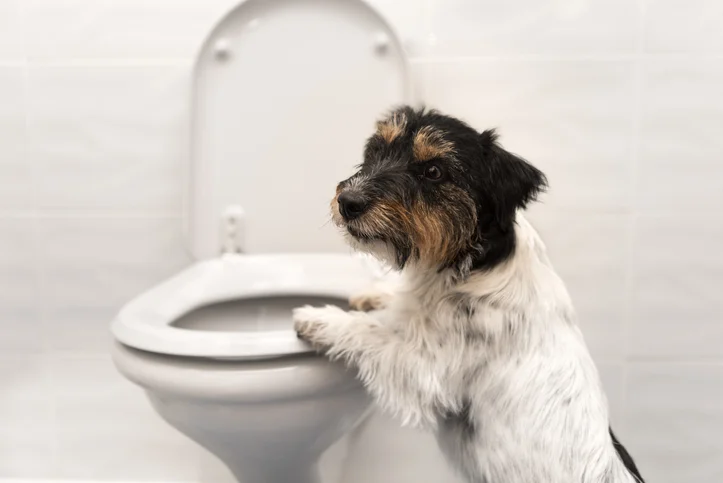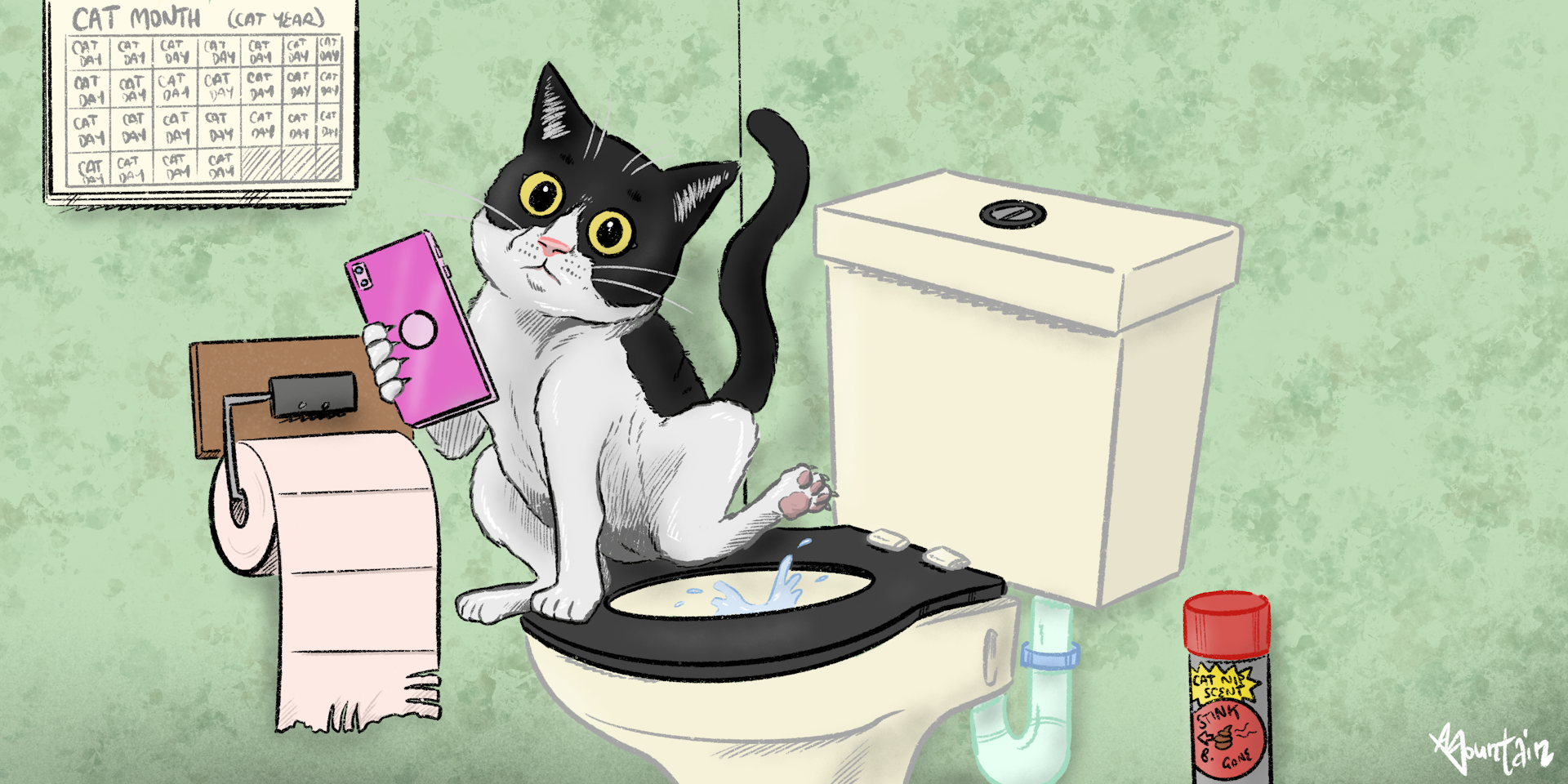An Threats of Flushing Animal Waste Down the Toilet
An Threats of Flushing Animal Waste Down the Toilet
Blog Article
Presented here below you will discover some worthwhile facts related to Why you should never flush dog poop down the toilet.

When it involves disposing of waste, especially animal waste, many individuals usually consider the practical choice of flushing it down the toilet. However, this apparently simple option can have major consequences for the setting and public health. In this post, we'll check out why flushing animal waste down the commode is a poor idea and give alternate methods for proper disposal.
Intro
Appropriate garbage disposal is vital for preserving environmental sustainability and public health. While it might seem safe to flush animal waste down the commode, it can cause various concerns, both for the atmosphere and human well-being.
Dangers of flushing animal waste
Ecological impact
Purging animal waste presents hazardous microorganisms and microorganisms right into waterways, which can adversely affect marine communities. These virus can pollute water resources and injury marine life, interfering with delicate ecological communities.
Public health issues
Pet waste contains damaging microorganisms such as E. coli and Salmonella, which can position significant health threats to humans. Flushing pet waste down the toilet can pollute water products, leading to the spread of illness and infections.
Alternatives to flushing
As opposed to flushing animal waste down the commode, there are several alternate disposal approaches that are more environmentally friendly and sanitary.
Composting
Composting pet waste is an eco-friendly method to take care of it. By composting, organic matter is broken down into nutrient-rich soil, which can be utilized to feed yards and plants.
Landfill disposal
Getting rid of pet waste in a land fill is an additional option. While not as environmentally friendly as composting, it is a much safer choice to flushing, as it protects against the contamination of water resources.
Pet waste disposal systems
There are specialized animal garbage disposal systems offered that securely and hygienically take care of pet waste. These systems often use enzymes to break down waste and eliminate odors.
Steps to proper pet waste disposal
To ensure proper disposal of pet waste, comply with these actions:
Scooping and getting waste
Consistently scoop and bag pet waste making use of naturally degradable bags. This protects against waste from contaminating the atmosphere.
Using assigned waste bins
Dispose of bagged animal waste in designated waste containers, such as garden compost bins or garbage dump containers. Stay clear of flushing it down the bathroom whatsoever costs.
Cleaning can and family pet areas frequently
Routinely clean litter boxes and pet locations to avoid the buildup of waste and microorganisms. Usage pet-safe cleaning items to preserve hygiene.
Advantages of appropriate disposal methods
Adopting appropriate disposal techniques for pet waste offers a number of benefits:
Decreased environmental pollution
Proper disposal approaches decrease the threat of environmental pollution, shielding waterways and environments from contamination
Reduced threat of water contamination.
By staying clear of flushing pet waste down the bathroom, the risk of water contamination is considerably decreased, protecting public health.
Enhanced sanitation and health
Proper disposal techniques promote much better sanitation and health, creating a much safer environment for both human beings and animals.
Verdict
In conclusion, purging pet waste down the bathroom is harmful to the atmosphere and public health. By adopting alternate disposal approaches and following correct waste management methods, we can decrease the unfavorable influence of pet waste and contribute to a cleaner, much healthier earth.
What To Do With Dog Poo – The Do's And Don'ts Of Disposing Of Faeces
Dog poo bins
Some councils provide dedicated dog waste bins in popular dog-walking areas that can take dog poo that has been bagged but you can legally dispose of dog waste in any public litter bin, as long as it is securely bagged. This also applies to your wheelie bin at home.
Do not flush
Water companies do not recommend flushing dog faeces down the toilet because certain parasites can survive the water processing treatment and are potentially harmful to humans. You should also never consider flushing dog poo that has been bagged down the toilet as the bags will not break down and instead create severe blockages in the sewage system.
In the woods
The Forestry Commission promotes a ‘stick and flick’ method for dealing with waste in the woods. This means finding a stick and using it to flick any poo from off the path so that it is out of the way of other walkers. You could also bury it as long as it is not in an area where there might be livestock.
Livestock
Parasites found in dog poo can be transmitted to livestock if they inadvertently eat infected faeces that has been left on grazing land. This could result in the death of sheep or abortion in cattle so you should always make sure you pick up your dog’s waste in fields where livestock could be present.

Routinely clean litter boxes and pet locations to avoid the buildup of waste and microorganisms. Usage pet-safe cleaning items to preserve hygiene.
Advantages of appropriate disposal methods
Adopting appropriate disposal techniques for pet waste offers a number of benefits:
Decreased environmental pollution
Proper disposal approaches decrease the threat of environmental pollution, shielding waterways and environments from contamination
Reduced threat of water contamination.
By staying clear of flushing pet waste down the bathroom, the risk of water contamination is considerably decreased, protecting public health.
Enhanced sanitation and health
Proper disposal techniques promote much better sanitation and health, creating a much safer environment for both human beings and animals.
Verdict
In conclusion, purging pet waste down the bathroom is harmful to the atmosphere and public health. By adopting alternate disposal approaches and following correct waste management methods, we can decrease the unfavorable influence of pet waste and contribute to a cleaner, much healthier earth.
What To Do With Dog Poo – The Do's And Don'ts Of Disposing Of Faeces
Dog poo bins
Some councils provide dedicated dog waste bins in popular dog-walking areas that can take dog poo that has been bagged but you can legally dispose of dog waste in any public litter bin, as long as it is securely bagged. This also applies to your wheelie bin at home.
Do not flush
Water companies do not recommend flushing dog faeces down the toilet because certain parasites can survive the water processing treatment and are potentially harmful to humans. You should also never consider flushing dog poo that has been bagged down the toilet as the bags will not break down and instead create severe blockages in the sewage system.
In the woods
The Forestry Commission promotes a ‘stick and flick’ method for dealing with waste in the woods. This means finding a stick and using it to flick any poo from off the path so that it is out of the way of other walkers. You could also bury it as long as it is not in an area where there might be livestock.
Livestock
Parasites found in dog poo can be transmitted to livestock if they inadvertently eat infected faeces that has been left on grazing land. This could result in the death of sheep or abortion in cattle so you should always make sure you pick up your dog’s waste in fields where livestock could be present.

As a fervent reader on Can You Flush Dog and Cat Poo Down the Toilet?, I thought sharing that article was a great idea. Make sure you take the opportunity to promote this article if you appreciated it. I enjoy reading our article about .
Customer Reviews Report this page